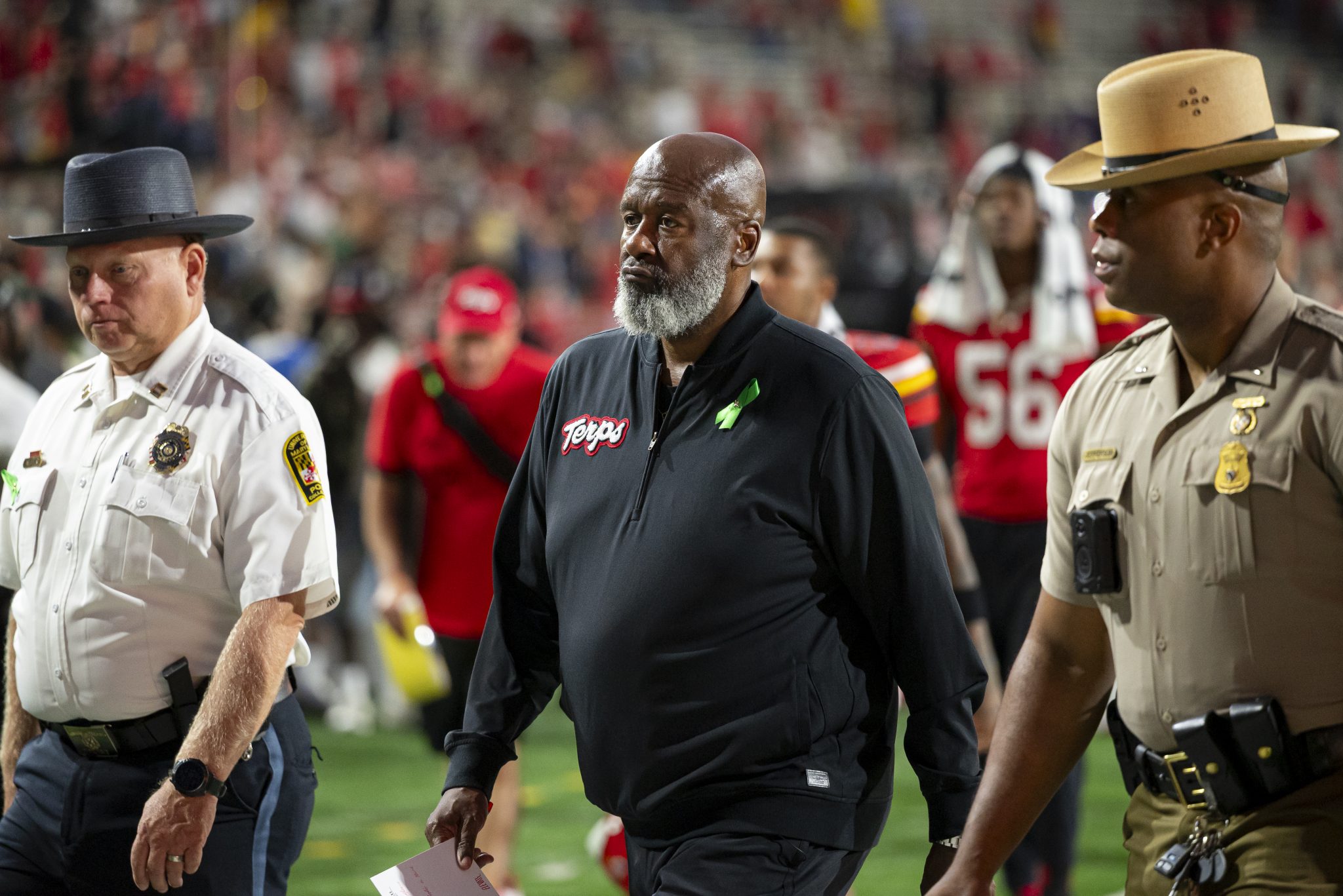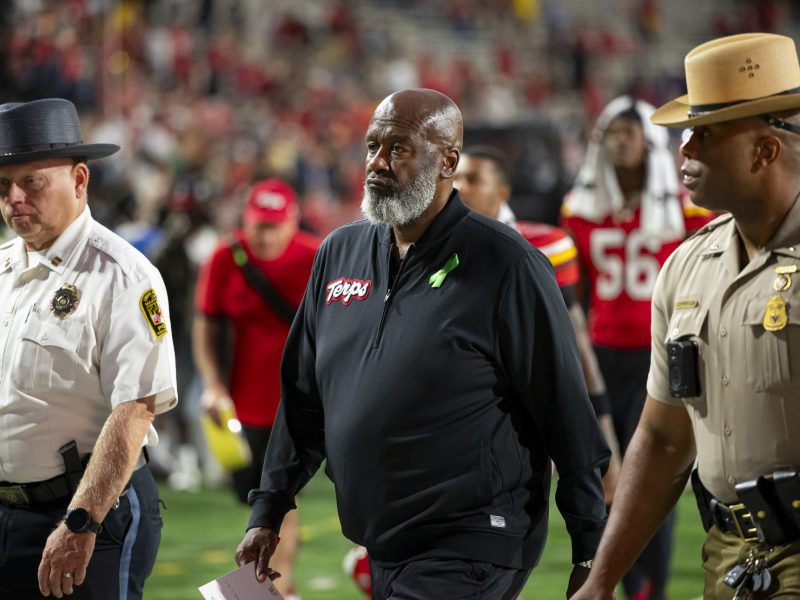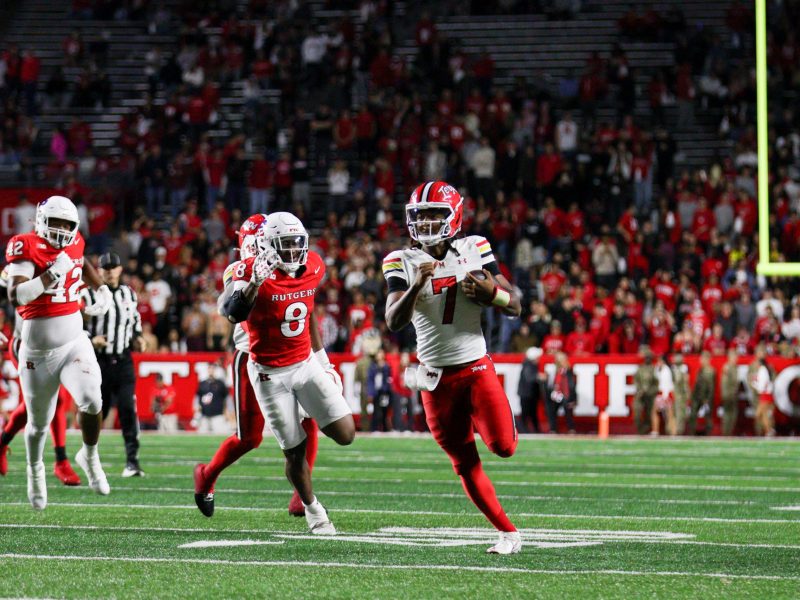The stage was set for Maryland football to shed an old label.
A sellout crowd. A lively 4-0 start. A fanbase desperate to believe SECU Stadium could finally feel like a true destination.
For two quarters, it looked like the Terps would deliver. They extended their lead to 20-0 early in the third quarter, the kind of moment that should have signaled a program turning the corner.
Instead, Maryland unraveled: 24 unanswered Washington points, a 24-20 loss and a familiar feeling over emptying stands.
For all the promise, the refrain echoed again: “Same old Maryland.”
Here are three stats that capture the Terps’ collapse.
No Maryland possession lasted longer than three minutes after the 20–0 start
After an interception set up a field goal on Maryland’s opening drive, the Terps’ offense settled in with a pair of long, methodical marches.
Maryland used a 16-play, 71-yard touchdown drive to take a 10-0 lead, then scored a field goal off another 16-play possession.
By halftime, Maryland had controlled the ball for 17:57 — about six minutes more than Washington — with those three scoring drives accounting for all but 51 seconds of its possession time.
A nine-play, three-minute drive pushed the lead to 20-0 early in the third quarter. But it was the longest possession Maryland managed the rest of the half,as it failed to sustain a drive longer than 2:54 the rest of the way.
[Maryland football continues post-bye week woes, implodes in 24-20 loss to Washington]
“What we learned today as a team is you got to learn how to put people away,” coach Michael Locksley said.
The Huskies, meanwhile, showed balance. They pieced together a seven-minute field-goal drive, followed it with a three-minute touchdown march, then struck again in just more than a minute. Their final blow came on an 11-play, 80-yard march that drained more than five minutes.
By the finish, Washington had held the ball three minutes longer overall — and eight minutes more in the second half — flipping the script from Maryland’s early control.
The Terps’ third-down efficiency was key in the first half — converting on seven of 11 attempts, along with a fourth down, while picking up 11 first downs.
Maryland converted only two of six third downs in the second half, with only three first downs in the fourth quarter.
“Washington did a little bit better than us, and especially in critical situations where they needed to make plays — they did,” Locksley said.
Maryland rushed the ball only four times in the second half
The Terps opened with a complementary offense, even if their ground game averaged just 2.8 yards per carry. They mixed quarterback Malik Washington’s 25 first-half passing attempts with 16 runs, 10 handled by redshirt freshman DeJuan Williams.
But that balance vanished after halftime. Williams carried the ball just twice more, and Maryland ran only four times in the entire second half — with a single handoff in the fourth quarter.
Meanwhile, the freshman signal-caller dropped back 24 more times in the second half, even as the Terps ran 13 fewer plays after the break.
Locksley pointed to the run-pass-option scheme as a reason for the shift. He said Washington was often reading between two-safety looks and man coverage. The Terps looked to throw against man but couldn’t capitalize.
[Malik Washington’s past coaches break down his historic start for Maryland football]
“We just went out there and we did what was working in the first half,” Washington said. “The first drives were methodical, taking what the defense gives us. We tried to do the same thing in the second half.”
The run game didn’t just disappear against the Huskies, though. It’s been missing all season.
The Terps are last in the Big Ten in rushing yards, the only squad in an 18-team conference averaging less than 100 yards a game, with 3.3 yards a carry. Roman Hemby, their leading rusher last year, is averaging more than five yards a carry at Indiana and ranks eighth in the conference.
Washington outgained Maryland by 163 yards in the second half
The Huskies sputtered early — converting just one of six third downs and getting outgained by more than 40 yards.
But the second half flipped. The Huskies went 4-for-6 on third downs and piled up 163 yards more than the Terps to seize control over the game.
Linebacker Daniel Wingate said Maryland’s second-half struggles stemmed from self-inflicted mistakes and a failure to maintain the standard set early. The junior said it was the missed execution, not scheme, that made the difference.
“We were up on them the whole game,” Wingate said. “Just being able to finish it to the end, until the clock hits zero, is something we got to work on.
The Terps lost team-sack leader freshman edge rusher Sidney Stewart to a targeting penalty, but Wingate said the defense needed to have a next-man mentality to keep the plays moving instead of dwelling on mistakes.
Cornerback Dontay Joyner, who had surrendered only 30 passing yards all season entering Saturday, conceded 75 to the Huskies. Kevyn Humes, similarly steady with just 44 yards allowed to that point, yielded 68 while working out of the slot.
“We didn’t need to do nothing special or extraordinary. We just had to continue to do what we do at the end of the day,” Wingate said. “And we didn’t do that.”



